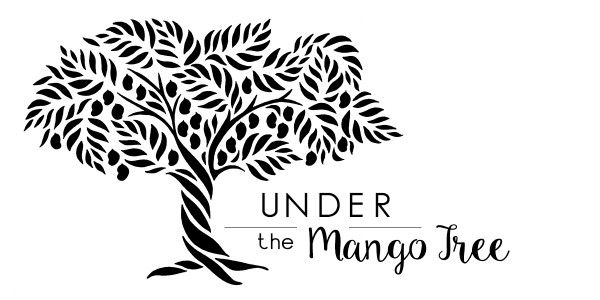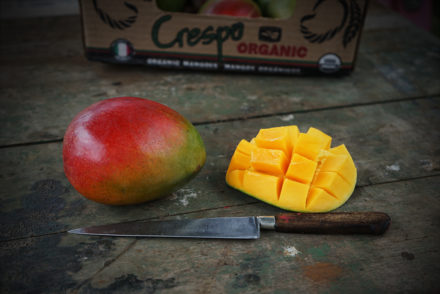Terrible Ecuadoran & Peruvian mango volume predictions
The Mexican organic mango season is officially closed at orchard level, and while that’s certainly noteworthy, there’s another pressing issue that demands our attention: the forecasts for Ecuadorian and Peruvian mango production volumes, both organic and conventional, are extremely grim. In fact, they are expected to be significantly worse than just bad—reaching catastrophic levels in the case of organic mangoes.
I’m going to try to succinctly piece together the facts, while reminding you of the finicky nature of mango blooms. It’s important to note that not even chemical bloom agents (which aren’t employed in organic production) are powerless against nature’s whims, such as El Niño or climate change.
About a week ago, I received information from multiple sources indicating that Peruvian mango production was expected to be significantly lower, with some estimates suggesting it could be as much as 80% below the usual levels. This news, for me, was quite alarming. Subsequently, I heard that the projected production crisis had sent shockwaves through the retail sector this week as rumors began circulating about mass-market retail contracts being put on hold, shortened in duration, or even canceled altogether.
While I was skeptical of such catastrophic numbers, there had been numerous reports during the summer indicating that El Niño was causing unusually hot weather, so I knew it probably was true. Here’s my best attempt at delving deep into this situation, considering that an 80% reduction in production is undeniably significant.

I will primarily focus on Peru, although the Ecuadorian season precedes it. To start, several sources, who preferred to remain anonymous, have confirmed that retail contracts are in a state of disarray. One source described it as, “really messed up; I have never seen anything like this.” Another retail source pointed out, “The last time Peru faced such dire circumstances was 23 years ago, and our demand wasn’t even a tenth of what it is now.”
Back in July, Agraria Peru, a local Peruvian agricultural news publication, along with Portifruticola & Fresh Plaza, reported that producers were expressing serious concerns about the lack of flowering due to the intense heat in the mango-producing region of Piura, one of Peru’s most crucial mango regions. Producers reported virtually no flowering, with less than 1% in some cases, which meant there would be no fruit available for November and very little (if any) for December. During this time, producers were eagerly awaiting the results of the next “remedy” or the outcomes of the June bloom inductions, with more information expected by the end of July. (The situation, remember, is even more challenging for organic mangoes, as they are not induced with blooming chemicals.)
Today, I had conversations with several Peruvian growers, all of whom confirmed the same consistent trend. While there are varying opinions on the exact extent of the decrease—whether it’s 80%, 60%, or 50%—the consensus among the growers I spoke to was that the decline is undeniably significant. Whether it ultimately turns out to be 50% or 80%, the situation is dire, and this realization is widely acknowledged within the Peruvian growing community. I am hoping the realizations move deeper into the mango community here.

Nissa – Peru Mango Growers – 2010
Part of the confusion surrounding these numbers stems from the fact that the Piura region is far more affected than other regions. Piura accounts for approximately 80% of Peru’s export production, with Lambayeque contributing about 15%, and Ancash (Casma) making up approximately 5%. Piura experiences a heavier initial production, while Casma contributes more towards the end of the season.
Some growers have attributed some drop in production, along with the extreme El Niño heat, to the heavy rains that occurred back in March, which may have adversely affected the development of mango flowers during the sprouting/budding phase. Additionally, or because of, the overall volume of flowers was lower and then faced unfavorable conditions due to excessively high temperatures.
In our “Mango Blooms Wow!” video, we provide an informative reminder of how mango blooms are formed and ultimately develop into fruit. It’s important to highlight that mango blooms thrive in cooler weather during the bloom stage, a crucial factor that unfortunately was lacking in Peru and Ecuador and the most important contributor to the lack of blooms and this lack of fruit.
It’s worth noting that part of the mathematical confusion arises from comparisons to the previous year, which also had its share of production problems, particularly in the late-production region of Casma in the Ancash region. As we approach the actual harvest dates, we can expect more precise figures to emerge. However, the number of containers that Peru is planning for has already been somewhat finalized, making these figures particularly crucial in providing a clearer understanding of the situation.
Yesterday, Portafruticola published the most recent report on the subject, titled, “Producción de mango peruano podría caer en un 80% por “El Niño“”confirming the same grim information that others have been highlighting. In this report, Milton Calle, Vice President of Pro Mango, emphasizes the severity of the situation, stating, “In Piura, there is nothing to do; there are orchards where the losses have reached 100%.” He underscores the critical role of Piura, which accounts for over 80% of Peru’s export production.

The article proceeds to provide more details and figures that I find to be of utmost importance. “Last season, 12,000 containers of mango were shipped for export; however, according to data from Pro Mango Peru for the next harvest, only 3,682 containers have been projected to go to different parts of the world.” This projection represents a consensus of roughly 70% less than the previous year.
It’s important to note that the United States is just one of the main destinations for Peruvian fruit. Other countries in the mix include the Netherlands, Spain, France, South Korea, the United Kingdom, and Canada.
The situation in the Ecuadorian mango season mirrors the challenges faced by Peru, with a projected reduction of approximately 70% in volume available to the US markets, particularly for conventional mangoes. The organic mango supply from Ecuador is also expected to be significantly affected (catastrophic) resembling the situation in Peru with the inability to induce blooms with chemicals, therefore there will be extremely limited organic production.
Ecuadorian volume difficulties, same as Peru, stem from the extreme temperatures that hindered bloom, and even with the use of bloom inducers, like in Peru, increased flowering did not materialize. Furthermore, in Ecuador, untimely rains during the flowering stage added to the already grim scenario. The forecast of earlier end-of-season rains only adds more pressure on what little volume they have in terms of crop quality.
In sum, the situation in both Ecuador and Peru is poised to have a profoundly negative impact on the mango industry, a particularly gigantic negative outcome for the local mango growers in these regions.









No Comments